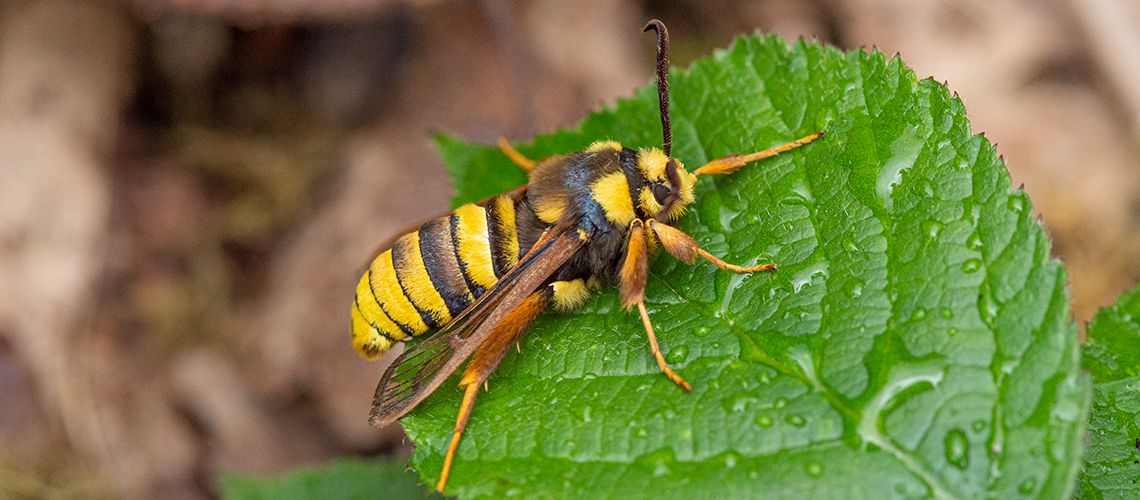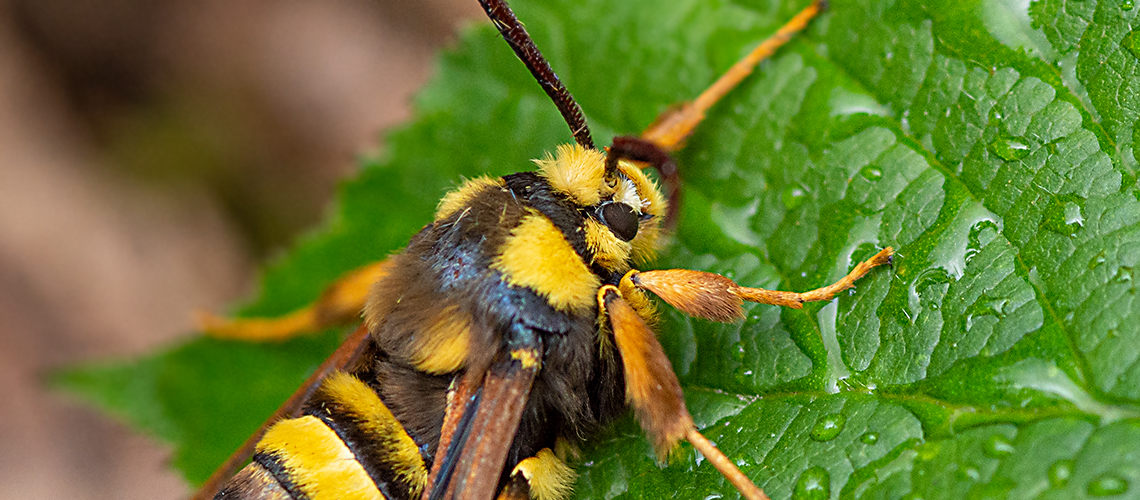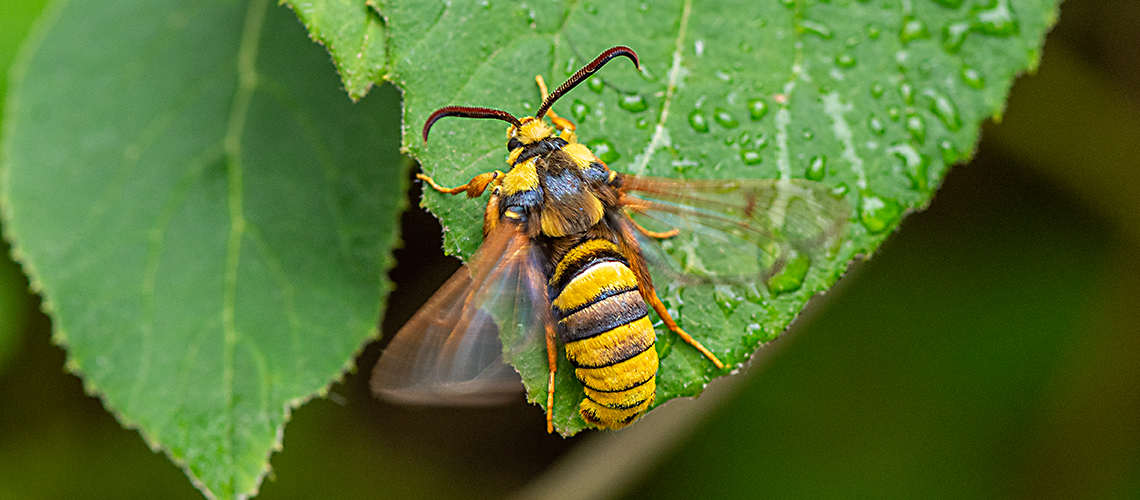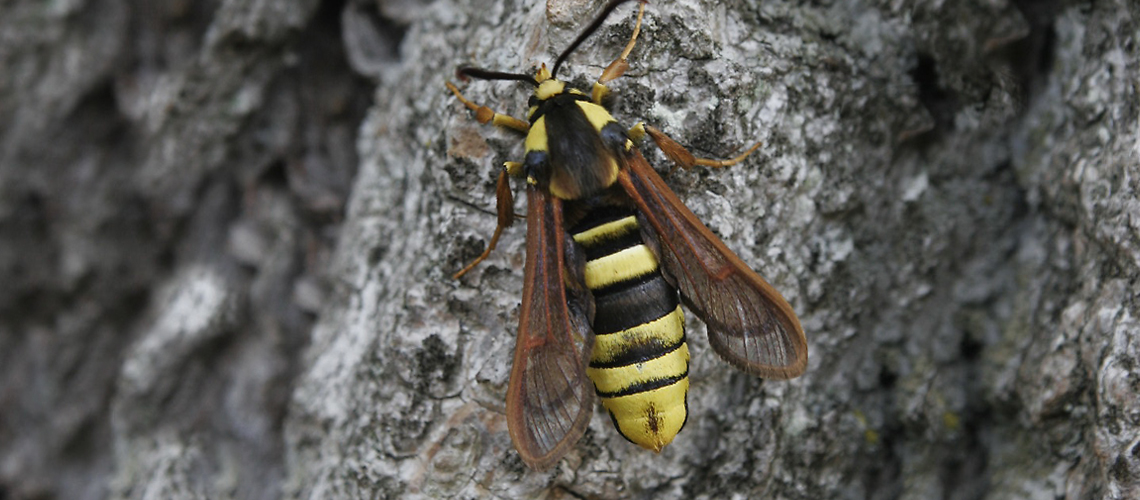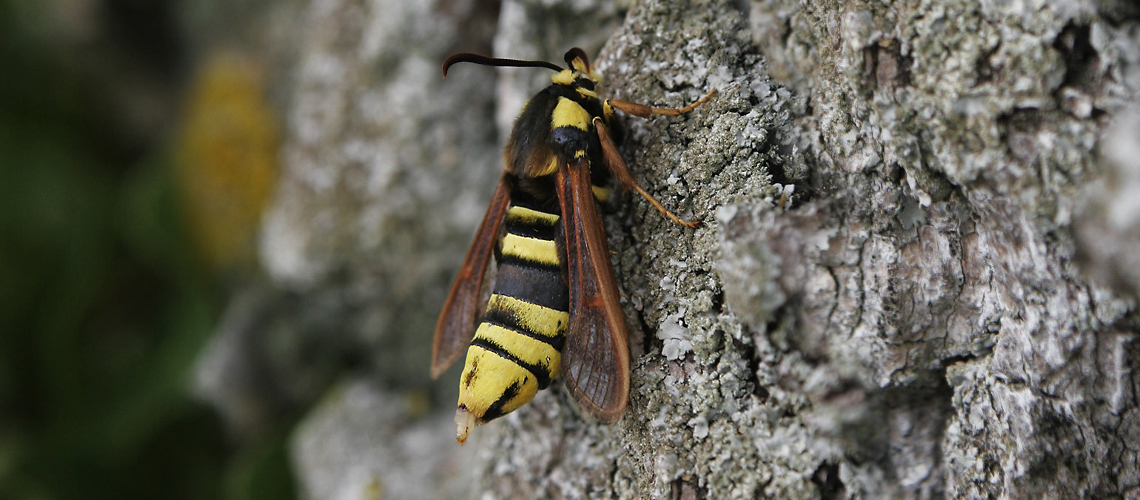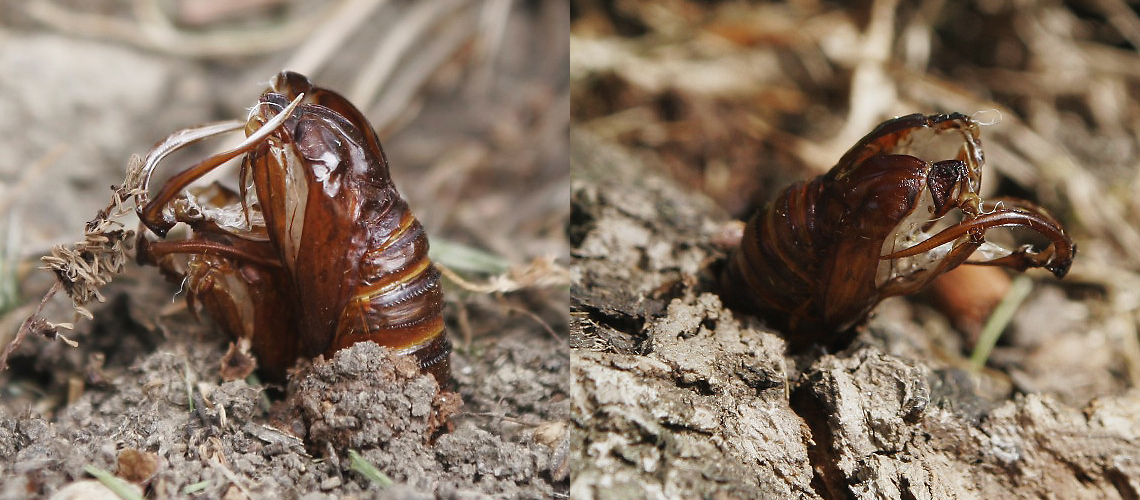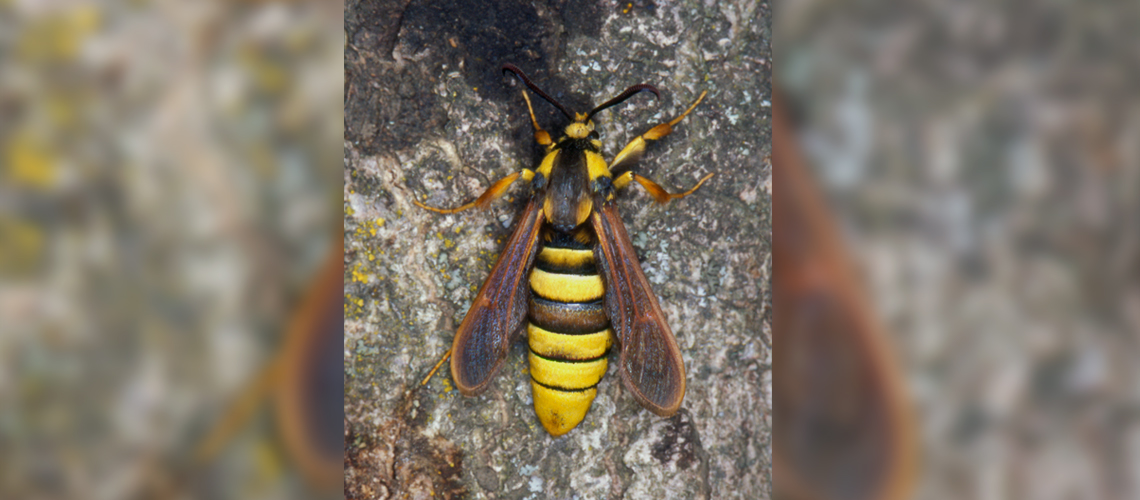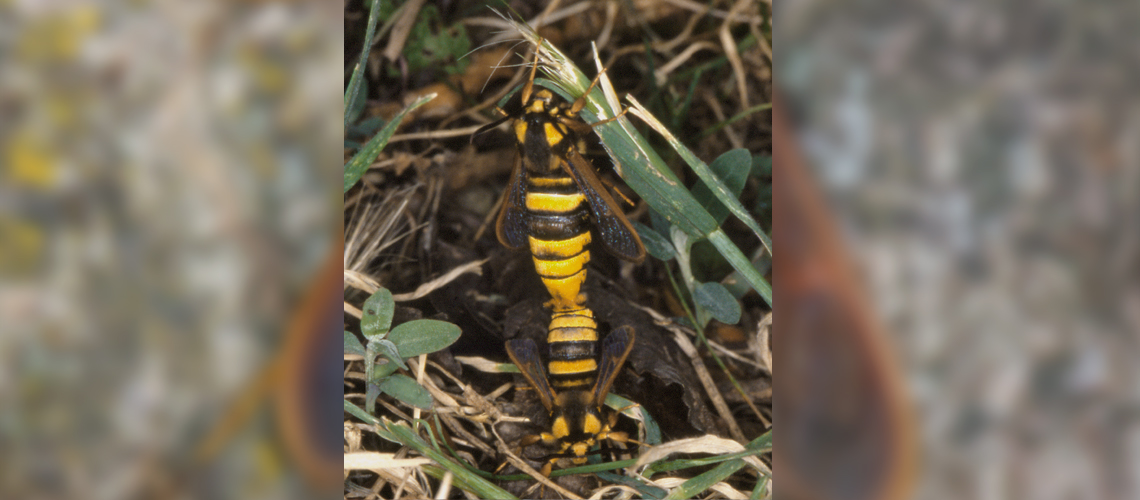A male Hornet Moth at Snitterfield Bushes SSSI. © 2020 - 2024 Steven Cheshire
Hornet Moth
Sesia apiformis (52.002)
The adult Hornet Moth is usually on the wing in June and July. It is generally very local and scarce in Warwickshire.
The Hornet Moth is strongly associated with Poplars growing in open habitats. Exit holes where the adult moths have emerged from their pupae may be found near the base of black Poplar and Aspen trees. The caterpillars of the Hornet Moth spend two years feeding inside the tree on the heartwood. They pupate just below the bark surface or in the soil nearby.
The species had been recorded on only two previous occasions prior to 1995. The first record is from Alvecote in the north of the county in June 1975 and Oxhouse Farm, Combrook in July 1979.
On 18 May 2011, Richard Gray contacted Phill Clayton to ask if he was interested in photographing a pair of mating hornets on a gate post at Halford.
Phill thought this a little odd since hornets do not mate in the spring. Curiosity awakened, he drove over to meet Richard armed with his camera. It was then that they realised they were in fact the rare Hornet Moth. A search of the Poplar trees in the surrounding area revealed 18 newly emerged moths.
What makes this record interesting is that the moths had emerged a month earlier than is normally expected. Over the next few days, Phill returned and counted at least 30 moths in total, all emerging from the same Poplar tree. He also found empty pupal cases in the trunk, exposed roots and surrounding soil.
With the growth in the use of pheromones to attrack males, there have been increasing numbers of sightings of this species in recent years.
Please note: From February 2023 all sightings records should be submitted via the iRecord Butterflies app available via the iTunes or Google Store. Find out more here: iRecord at Butterfly Conservation.

